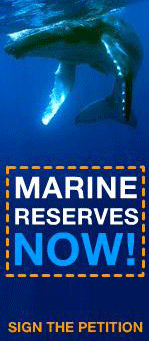The Greenpeace RED List
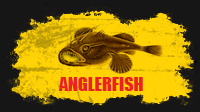
Anglerfish is caught using bottom trawls or gillnets. Bottom trawling causes significant disturbance to seabed habitats and has high unintentional catch (bycatch) of unwanted and undersized species that are thrown back into the sea dead or dying. Gillnets are associated with a high rate of capture of immature fish that are discarded, and also kill dolphins and porpoises.

All stocks of all species of tuna are fished at full capacity, and many are declining or depleted. Southern bluefin tuna, bigeye tuna, and northern bluefin tuna are endangered. Tuna is mainly caught using purse seines or long-lines. These methods are associated with a high unintentional catch (bycatch) of other fish species.If eating tuna, select skipjack tuna that is caught from pole and line or troll fisheries. A further problem with some tuna stocks is iIlegal (pirate) fishing.
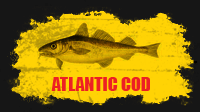
ACod stocks have suffered heavily from overfishing on both sides of the Atlantic. In the major fishing areas for cod in US and Canadian waters of the Northwest Atlantic, stocks have been overfished and continue to be overfished. And, all stocks are classified as being overfished or at risk of being harvested unsustainably. A further concern is that cod are often caught using bottom trawling gear which damages seabed habitats that are important for the survival of many other species and catches and kills unwanted species.
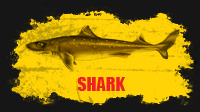
Many shark species are overfished, or are listed as vulnerable, near threatened, endangered or critically endangered by the World Conservation Union (IUCN). An estimated one hundred million are killed every year and half of them are caught accidentally. Sharks are caught by a variety of destructive fishing methods such as longlining and bottom trawling. These methods are associated with high unintentional catch (bycatch) of other fish species. Some shark species are caught by illegal (pirate) fishing.
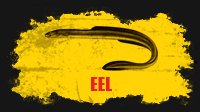
Juvenile eel are called elvers or glass eels, growing eels are called yellow eels and mature eels are called silver eels. Eel is fished at all of these life-stages. However, overfishing has contributed to its severe decline in many regions. Some regulations are now in place to try to aid the recovery of eels. Eel is also farmed, but farming requires juveniles and its food(wild fish)to be taken from the wild to supply stock and this puts further pressure on wild eel populations.
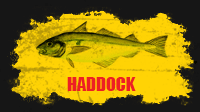
Haddock is often caught together with other fish by bottom trawling. This fishing method unintentionally catches high numbers of other unwanted immature fish and other species that are thrown back into the sea, dead or dying. Choosing line-caught haddock or longline caught haddock that uses “seabird-friendly” methods minimises impacts on the environment.
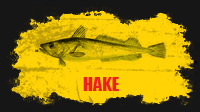
In South American waters, Southern hake and Argentine hake are mainly caught using bottom trawling. This fishing method impacts on seabed habitats and has a high unintentional catch (bycatch) of other species. European hake is caught with gillnets, longlines, pair trawls and bottom trawls. Gill nets for hake are associated with a high rate of capture of immature fish that are discarded, and also kill dolphins and porpoises. Pair trawls are associated with the unintentional capture of dolphins.
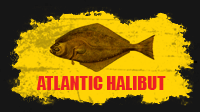
Atlantic Halibut inhabits both sides of the North Atlantic but has been depleted by overfishing to very low levels. It was classified as being endangered by the World Conservation Union (IUCN) in 1994 but this needs updating. Halibut is often caught by bottom trawling. This fishing method unintentionally catches high numbers of unwanted species that are thrown back into the sea, dead or dying. Small, immature halibut is caught and killed in this way and there is concern that this is further inhibiting the recovery of stocks.
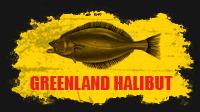
Greenland halibut stock levels are at an historic low in waters around Iceland, West Scotland, North Azores, North East Arctic, East and SE Greenland, and scientists have advised that fishing should be reduced. In some fisheries, catches of Greenland halibut have been above those recommended by scientists. The fishing methods used to fish for Greenland halibut include bottom trawling which impacts on seabed habitats.
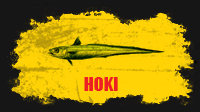
Fishing methods used for hoki - bottom trawling or mid-water trawling - are associated with problems. Bottom trawling is destructive to sea-bottom habitats. The New Zealand fishery for hoki unintentionally captures hundreds of New Zealand fur seals and seabirds including threatened albatrosses. Basking sharks, another threatened species, are also taken. The stocks of hoki are now considered to be overfished. In addition, the fishery captures numerous juvenile hoki and this threatens future stocks of hoki.
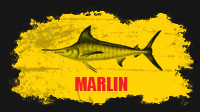
The main fishing method for marlin is longlining. Striped marlin, Atlantic white marlin and Atlantic blue marlin are mainly caught unintentionally as bycatch in longline fisheries for tuna and swordfish. Longlining unintentionally catches and kills significant numbers of seabirds, including albatrosses and another endangered animals. There is little information available on some marlin to determine stock levels.
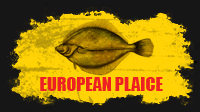
Many stocks of plaice are under high fishing pressure in European waters. Exceptions are the Irish Sea stock and Bay of Biscay stock which are not overfished. Plaice are caught using bottom trawling, often by a method called beam trawling. This technique catches high numbers of other unwanted bottom-dwelling sea creatures until 70% is unwanted and thrown back dying. Large, mature plaice is now very rare.
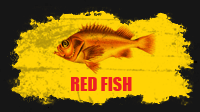
The red fish species occur in areas of the Eastern and Western Atlantic. Most stocks are now at historical lows and are considered to be depleted. The Acadian redfish was classified as an endangered species by the World Conservation Union (IUCN) in 1996 but this needs updating. Acadian redfish is often fished by bottom trawling which impacts on seabed habitats including coldwater corals. All redfish species are vulnerable to pirate fishing in some areas.
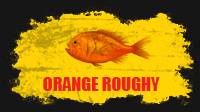
Orange roughy occurs in “pockets” of the deep oceans worldwide, with commercial fisheries off New Zealand, Australia, Namibia and the Northeast Atlantic. It has been severely overfished and has undergone dramatic population declines in some areas. It is fished over seamounts, steep continental slopes and ocean ridges using bottom trawling gear which has caused considerable damage to sensitive seafloor habitats including corals and bycatch.
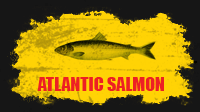
Wild Atlantic salmon stocks in North America, Europe and the Baltic have been over-exploited since the 19th century and have disappeared from many regions all together. Presently, stocks are severely depleted. Salmon is threatened by overfishing, including unintentional capture in other fisheries. Non-reporting of catches can also be a problem In the US, stocks were classified as endangered under the Endangered Species Act in 2000 and commercial fisheries ceased.
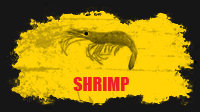
Tropical shrimp are fished using bottom trawling, which results in a high unintentional capture (bycatch) of other species including the endangered sea turtles. The fisheries are responsible for taking 27% of the world’s bycatch. For every 1 kg of shrimps captured as much as 10kg of other marine life is thrown back into the sea, dead or dying. Farming of tropical shrimp has led to the destruction of vast areas of mangroves in several countries, over-fishing of juvenile shrimp from the wild to supply farms, and significant human rights abuses.
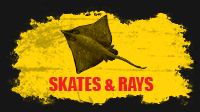
Many skate and ray populations are now severely depleted and suffer from overfishing and poor management. The status of an increasing number of European species is of great concern and some are listed as vulnerable, endangered or critically endangered by the World Conservation Union (IUCN). Many species of skates and rays are caught by bottom trawling which impacts on seabed habitats and unintentionally catches high numbers of unwanted that is thrown back dying.
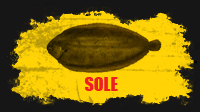
Sole are manly caught by beam trawling or otter trawling. Beam trawling catches high numbers of other bottom-dwelling sea creatures and up to 70% of the catch is unwanted and thrown back into the sea, dead or dying. Scientists consider that fishing levels for sole in the Celtic Sea, Western Channel and Skagerrak and Kattegat are sustainable but harvesting levels in the North Sea, Irish Sea, Eastern Channel and Bay of Biscay are at risk of being unsustainable.
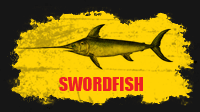
Swordfish is primarily targeted using longlining. This technique unintentionally catches and kills significant numbers of other species. Swordfish stocks are depleted in the Indian Ocean and are fully fished in the Mediterranean. North Atlantic stocks were listed as endangered by the World Conservation Union (IUCN) in 1996 but this needs updating. The South Atlantic stock status is uncertain and only Eastern Pacific Ocean stocks are considered to be relatively healthy.
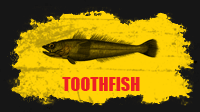
There is concern that this species is seriously overfished. Very high levels of illegal fishing ignore fisheries management plans, approved fishing methods and conservation practices. Most toothfish is taken by bottom longlines and some by bottom trawling. Bottom trawling impacts on seabed habitats. Longlining catches and kills significant numbers of seabirds including endangered albatrosses.
Greenpeace is asking for urgent action on these species – if retailers and the public care about the state of our oceans, these are the species they should avoid buying.
The fish species are on this list for one or more ofthe following reasons:
- They have a life history that makes them very vulnerable to fishing
- They are commonly sourced from overfished and depleted stocks, or are being fished at such a high rate that stocks are being depleted rapidly
- The fishing methods used to catch the fish are often highly destructive to other oceans creatures and/or habitats.
The Greenpeace ‘Red-Grade’ Criteria for Unsustainable Fisheries provides more detail and background information for the assessment criteria used by Greenpeace scientists, and can be downloaded by clicking on the links on the bottom of this page.
For some of the species listed, there might be a few stocks that are not yet overfished, that are caught with more sustainable fishing methods, and would therefore not be graded red. Same is true for some aquaculture farms. This can be explored by applying the Greenpeace ‘Red-Grade’ Criteria to that particular fishery/farm.
Does this mean that everything not on this red list is sustainable?
No. There are many other types of fish and seafood that are from unsustainable fisheries. The ones on the Greenpeace International seafood red list are the most commonly sold species that supermarkets need to take urgent action on to ensure the future of these species and the fisheries. As seafood markets and consumer preferences for seafood differ from country to country there are specific Greenpeace Seafood Red Lists for many countries. Make sure to take a look at your national Greenpeace website to see if there is a list especially for your country.


